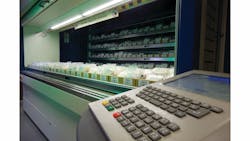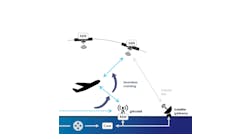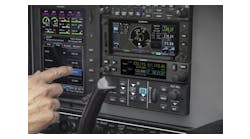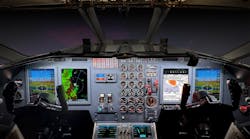In 1989 a blackberry was (and still remains to be) a small fruit. In a similar vein a web was (and continues to be) the result of the industrious efforts of a spider. Therefore if you were to say to someone back then that you were going to take a photo on your blackberry and send it to the web, you would have been met with much derision. Yet today this Orwellian newspeak is easily deciphered, universally understood, and generally accepted.
Technology though isn’t just the adoption of a new language littered with generic and generalised trademarks. It is the acceptance, and use of, devices designed to save us time. They are, in essence, time machines. Not a single technological development has emerged on the back of market research that has demanded that “things need to be slower”. Some times machines go further and, like business aviation, permit time travel.
Time and money
In 1748 Benjamin Franklin coined the phrase “Time is Money”. Business needs to control time in order to make money. Products need to be introduced to the marketplace first and fast to exploit any competitive advantage. This is illustrated with the proliferation of dedicated corporate jets following the first flight of the Lockheed Jetstar in 1957. Within a decade no fewer than six different business jets had flown for the first time. That is an unprecedented rate of development averaging at a new business jet every 18 months. More importantly most of the current business aviation manufacturers emerged in this period with Dassault Falcon, Learjet, Hawker (Siddeley), and Gulfstream.
Businesses thirst for celerity has spawned an industry with speed embedded at its core. It therefore is an anathema to the users of business aviation, who are accustomed to largely unhindered time travel, that something should emerge which impinges their swift movement to multiple destinations. Perhaps the greatest irritation of operators and owners is planned or emergency maintenance which can be unduly lengthened through parts supply.
Manufacturer warranty and service support
Manufacturers have responded to this unwelcome occupational hazard by offering new aircraft with extensive warranty programmes. Bombardier, for example, has Smart Parts, its renowned cost-per-flight-hour programme which protects the owner again unforeseen replacement part expenses. Falcon offers FalconCare which is a guaranteed maintenance cost program providing comprehensive coverage for scheduled and unscheduled events. Recently Gulfstream and Cessna have unveiled mobile service and parts support. Gulfstream’ s Field and Airborne Support Teams (FAST) includes two Gulfstream G150s, a fleet of customised trucks and a dedicated team of trained technicians to perform scheduled and unscheduled maintenance anywhere in the United States. This mirrors Cessna’s Mobile Service Units (MSU) which comprise a fleet of 50 bespoke trucks offering all the parts required, to customers in the United States.
So from a manufacturer’s point of view, providing you have bought a new aircraft, and purchased an expensive warranty protection package, and you are located in the United States, your ability to time travel remains unhindered. Except, what happens if you’ve bought a pre-owned aircraft, that isn’t covered by a manufacturer's warranty and you don’t fly in the United States?
Parts support
Twenty five years ago, when people were trying to avoid touching spider’s webs whilst reaching to pick a blackberry, a company was created in the United Kingdom that was focused on providing support to the British Aerospace 125 series of aircraft. Its rationale was, and remains to be, that be having serviceable stock available 24 hours a day saves operators' time. That company went on to outlast all the type certificate holders of what eventually became known as the Hawker. It is Allaero.
Much has changed for independent stockists in 25 years. For example legislation has become tighter to clean the pollution of bogus parts. This has accompanied the adoption, by stockists such as Allaero, of quality management systems (QMS), such as the ISO9001 series of standards and the Aviation Suppliers Association’s ASA100.
For the stock carried there have been changes. While Allaero still retains one of the largest independent stocks of Hawker rotables in the world, it has diversified its industry recognized quality support. Recently it has acquired two complete aircraft packages of spares. It is this decision in deciding to invest in stock on the shelf that has been met with approval by operators and maintenance facilities of business aircraft, as this saves operators time in having to invest in lengthy repair schemes. More importantly the stock is ready to fly ensuring downtime is kept to a minimum.
Expanding up not out
This widening of capabilities has been achieved primarily through utilising technology. Firstly and most visibly, was the decision taken two years ago to utilise Hänel lean-lift technology to provide an economic and practical solution to the increase in stock.
Moving a business is expensive. Allaero’s location within minutes of both London Heathrow and Gatwick airport’s plus the array of smaller dedicated business airports in the Southeast (including London City, Luton, Biggin Hill, and Farnborough) works to its advantage in being able to swiftly assist business aviation’s needs in the United Kingdom, Europe, and the world. Moving a business is also disruptive with stock, equipment and staff having to be relocated with the minimum of disruption. The decision was therefore made to store stock vertically, in fact so vertically that the combined height of stock exceeds 100 metres (328 feet). It has permitted an additional 11,000 square feet of storage to be accompanied within the 10,500 square footprint of the building. The result is that items can be picked and despatched within 15 minutes. This would not be achieved with traditional racking storage with its origins in the Victorian age.
The second area of Technophilia is Allaero’s development of its own bespoke computer system. This recognizes more than 300,000 part numbers from seven different manufacturers for 24 different aircraft types. This works in conjunction with Allaero’s web site which provides users the ability to check stock online for stock with live information on stock levels available 24 hours a day. This approach contrasts with the traditional consultations purchasers have become accustomed to on aviation-specific search engines where data can be incorrect or out-of-date. As a result of this investment it is hoped that by the end of the year Allaero will roll-out online purchasing.
The adoption of technology to assist in something as mundane as aircraft parts has assisted a stockist like Allaero to exist a quarter of a century. More importantly despite the huge changes that have occurred in the business aviation industry there is a constant. Allaero is still facilitating time travel, something that, back in 1989, was only thought possible in the world of fiction.
Paul Greasley has worked in corporate aviation most of his life. Married with two children, he regularly writes about aviation and motorsports. For more information visit www.all.aero.




